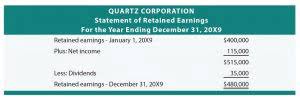Content
- Grow Your Business Further, Faster
- Accounts Payable A
- Reliability Principle
- Cost Principle Or Historical Cost Principle:
- Monetary Unit Principle:
- Other Principles Derived From The Above Concepts
- What Is Gaap, And Why Is It Important?

Revenue Recognition Principle – requires companies to record revenue when it is earned instead of when it is collected. This accrual basis of accounting gives a more accurate picture of financial events during the period. This is the concept that a business should only record transactions that can be stated in terms of a unit of currency.
The scoring formulas take into account multiple data points for each financial product and service. Understanding these concepts can help you make smarter financial decisions in the long run and day to day. We believe everyone should be able to make financial decisions with confidence. Consultance Accounting leverages the best people, processes and technology to help small and medium-sized organizations achieve success. Now that you’ve got all of these down, moving forward with the financial positioning of your business will be effortless. Consultance Accounting leverages the best people, processes and technology to help small and medium-sized organizations excel.

Businesses and their accountants should include all information necessary to understand financial statements in or alongside those financial statements. The cost principle states that businesses should only record their assets, equity investments, and any liabilities at original purchase costs. However, some businesses ignore this principle these days since they may opt to adjust assets and liabilities according to fair values instead.
Grow Your Business Further, Faster
Money is generally and globally used in a normal business transaction. The entity should conduct going concern assessment annually to see if it is in the going concern problems. The assessment should not only focus on financial factors but also non-financial factors that might affect the entity to shut down its business. It also benefits to owners or shareholders to assess the performance of each entity separately and well as to assess the financial position of the entity. Another example is that your entity is current using FIFO to value your inventories and this method should be used to value your inventories not only in this period but also in the next period.
The full disclosure principle states that you should include in an entity’s financial statements all information that would affect a reader’s understanding of those statements, such as changes in accounting principles applied. The interpretation of this principle is highly judgmental, since the amount of information that can be provided is potentially massive. To reduce the amount of disclosure, it is customary to only disclose information about events that are likely to have a material impact on the entity’s financial position or financial results. In fact, the full disclosure concept is not usually followed for internally-generated financial statements, where management may only want to read the “bare bones” financial statements. Like the matching principle, the revenue recognition principle relates to the accrual basis of accounting. The revenue recognition principle dictates that revenue is reported when it’s earned, regardless of when payment for the product or service is actually received.
Accounts Payable A
It doesn’t matter what currency is being used, it need only be stable and dependable. Since the going concern concept postulates that the business will keep functioning continuously, accountants choose some convenient segment of time to ascertain income for that period. There are many principles that use to recognize revenue in the Financial Statements. In accrual accounting Principle, Revenue should be recognized when risks and rewards are transferred. The entity could record these costs in the income statement but the entity could not record the costs that sales staff’s performance becomes low as the result of an accident. Based on this concept, financial information is material if its omission and addition could be misleading the users’ decision. The same size and nature of financial information might material to one entity’s financial statements but might not material to another.
Net income from the Income statement is a flow-through item that is the first line in an Indirect Cash Flow Statement. Net income also flows through to retained earnings, which is shown in the Statement of Retained Earnings. The accounting principles applied to the income statement carry over to these financial statements. Revenue Recognition and the Matching Principle are reflected in the income statement, as revenues and costs or expenses are recorded.
You don’t have to spend sleepless nights calculating incoming and outgoing transactions of your company anymore. The features of Synder are limitless, but the most significant basic accounting principles of them are the Auto-Sync, importing previous data into the accounting system, and Rollback and Duplicates Detector, designed to avoid any issues with the data import.
Reliability Principle
That’s why our editorial opinions and reviews are ours alone and aren’t inspired, endorsed, or sponsored by an advertiser. Editorial content from The Blueprint is separate from The Motley Fool editorial content and is created by a different analyst team. Today, these applications have made the entire process much easier, using intuitive data-entry screens while replacing outdated terms with familiar vocabulary that most of us are already familiar with. Product Reviews Unbiased, expert reviews on the best software and banking products for your business. Case Studies & Interviews Learn how real businesses are staying relevant and profitable in a world that faces new challenges every day. Best Of We’ve tested, evaluated and curated the best software solutions for your specific business needs. Alternatives Looking for a different set of features or lower price point?
- As a result, the FASB works with the Private Company Council to update GAAP with private company exceptions and alternatives.
- A master’s in accounting opens the door to in-demand, lucrative careers.
- Only transactions that can be proven should be recorded under the reliability principle.
- The business activities may be reported in short, distinct time intervals which may be weeks, months, quarters, a calendar year or fiscal year.
- In other words, expenses are recorded when used , even if they are not yet paid.
- Help businesses find ways to succeed and thrive, even in tough economic conditions.
- In order for your revenues to be recognized in the period that the services were provided if you are on the accrual basis, If you are on the cash basis then, the revenues need to be recognized in the period the cash was received.
Accounting, also known as accountancy, is the measurement, processing, and communication of financial and non financial information about economic entities such as businesses and corporations. The terms “accounting” and “financial reporting” are often used as synonyms. The materiality principle lets an accountant use their professional discretion to ignore one of the generally accepted accounting principles and determine how to report an expense. Unless otherwise noted, financial statements are prepared under the assumption that the company will remain in business indefinitely.
Moreover, the materiality principle explains why your accountant might round the amounts on your financial statements to the nearest dollar. However, the matching principle specifies that businesses should use the accrual method of accounting and report all financial information using that method. This accounting principle helps ensure that stockholders, investors, and even the general public are not misled by any aspect of a business’s financial reports. Auditors are particularly interested in this accounting principle because their role is to find evidence that supports every transaction a business records. If a business is recording a reserve or an allowance for an account in question, it can be more challenging to adhere to this principle as reserves are generally based on opinion.
Cost Principle Or Historical Cost Principle:
Accountancy refers to the occupation or profession of an accountant, particularly in British English. The word was formerly written in English as “accomptant”, but in process of time the word, which was always pronounced by dropping the “p”, became gradually changed both in pronunciation and in orthography to its present form. It is excellent that you have the previous month’s statistics, but that will not be enough, you need to be able to compare all your business’ profits over an extended amount of time. Also known as sales, it is a reflection of the customers’ value for the product. That’s actually what you are going to gain by selling services or something else.
The income statement is the same as a profit and loss statement, and it tells you how much money you made or lost during the period. The balance sheet lists your assets and liabilities, and it gives you a snapshot of how much your company is worth. Types of accounts that affect your income statement include sales, overhead expenses and cost of goods sold. Your balance sheet lists accounts such as inventory, cash, property and equipment, notes payable and accounts receivable. If you’re looking to understand basic accounting concepts, this is a critical one.
(Which, like passive income, is an idea only white people would come up with, but before I digress into the entirety of U.S. history…)
Clearly, these women didn’t actually need the income at all. Or they would have cared more about, idk, basic accounting principles.
7/
— Jennifer Duann Fultz (Chief Executive Auntie) (@jennduannfultz) February 10, 2022
This principle may not be in effect on a long-term basis, as more organizations are moving toward fair value adjustments. Choosing to move to making fair value adjustments can create more consistent financial records. If neither of the above is logical, expenses are reported in the accounting period that the expenses occur. Examples are advertising expense, research expense, salary expense, and many others. To report a company’s net income for each month, the company will prepare adjusting entries to record each month’s share of depreciation expense, property taxes, insurance, etc.
Monetary Unit Principle:
A better analysis of your business’s performance and profitability than cash-based statements. To go through the extra effort to complete your business bookkeeping for foreign transactions.
- Matching does not mean that expenses must be identifiable with revenues.
- These accounting principles guarantee consistency in accounting reports and financial statements among all businesses and therefore, help protect business owners, consumers, and investors from fraud.
- When every company follows the same framework and rules, investors, creditors, and other financial statement users will have an easier time understanding the reports and making decisions based on them.
- When evaluating offers, please review the financial institution’s Terms and Conditions.
- While GAAP accounting strives to alleviate incidents of inaccurate reporting, it is by no means comprehensive.
The accrual method in accounting means that “revenue or income is recognized when earned regardless of when received and expenses are recognized when incurred regardless of when paid”. The cost accounting principle for small business ensures you correctly value the expenses of your company’s assets.
Other Principles Derived From The Above Concepts
Accounting principles are implemented to improve the quality of the financial information that various companies report. Learn how to set up a small business accounting systems with this step-by-step guide. If your company has used the accrual method for revenue and expenses, you can’t suddenly switch to the cash method. Also known as the objectivity principle, the reliability principle is used as a guide for knowing what information is accurate, trustworthy, fair, and relevant. Only those transactions that can easily be verified with evidence should be recorded in accounts. The cost principle states that one should expense depreciation over the lifetime of an asset. If the depreciation is so small, one need not carry the expense over in smaller amounts across the asset’s useful lifetime.
Weber Inc. Reports Fiscal First-Quarter 2022 Financial Results – Yahoo Finance
Weber Inc. Reports Fiscal First-Quarter 2022 Financial Results.
Posted: Mon, 14 Feb 2022 12:47:00 GMT [source]
This prevents intermingling of assets and liabilities among multiple entities, which can cause considerable difficulties when the financial statements of a fledgling business are first audited. This is the concept that a business should only record its assets, liabilities, and equity investments at their original purchase costs. This principle is becoming less valid, as a host of accounting standards are heading in the direction of adjusting assets and liabilities to their fair values. Recording transactions is vital to a business’s financial statements and a key responsibility of the accounting department.
What Is Gaap, And Why Is It Important?
Available within Connect, these videos teach the core concepts of the content in an animated, narrated, and interactive multimedia format, bringing the key learning objectives of the course to life. Checkpoint questions allow instructors to assign points to knowledge checks and grade for accuracy, not just completion. COVs are particularly helpful for online courses and for those audio and visual learners who struggle reading the textbook page by page. A/R provides the same information for outstanding customer payments, again advising you when a customer payment is late. Once you have multiple customers or vendors, aging reports can become invaluable to your business. Your chart of accounts is the heart of any accounting system and lists all of the accounts found in your general ledger, which is where all of your accounting entries reside. A debit is always on the left side of any accounting transaction, while a credit is always on the right side of the transaction.
For instructors, SmartBook 2.0 provides more granular control over assignments with content selection now available at the concept level. SmartBook 2.0 also includes advanced reporting features that enable instructors to track student progress with actionable insights that guide teaching strategies and advanced instruction, for a more dynamic class experience. Sage 50cloud is a feature-rich accounting platform with tools for sales tracking, reporting, invoicing and payment processing and vendor, customer and employee management.

All of these transactions will need to be entered into your accounting software by making a journal entry. Accounts receivable is where all of the funds currently owed to your business are recorded until paid by your customers. You can use A/R to acquire insight into your business operations by calculating the accounts receivable turnover ratio. Likewise, if you’re making a credit entry, you will have to make a corresponding debit entry. While sole proprietors and freelancers may not need to employ double-entry accounting, small and growing businesses will be better served by doing so. While accounting may appear to be intimidating to business owners, just about anyone can easily understand bookkeeping basics. However, if you take a little time to familiarize yourself with the basics of accounting, you’ll likely find it’s not as difficult as you may have imagined.

